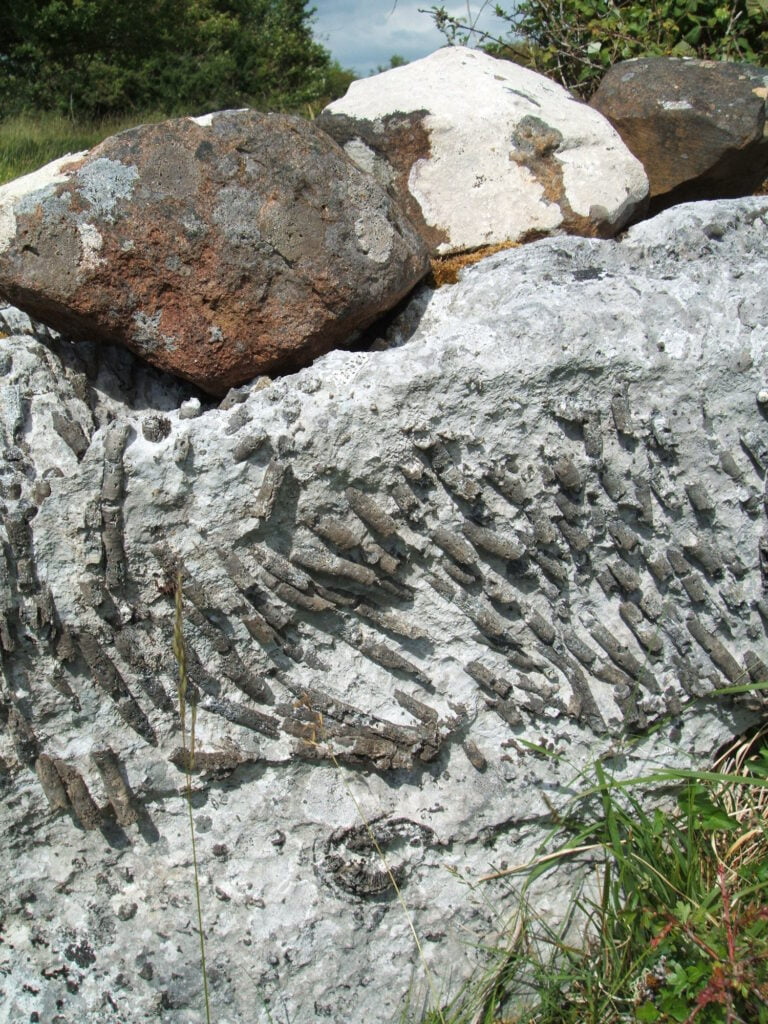355 Million Years Ago
Connacht in the Tropics – Carboniferous period
After this intense period of geological activity, the Irish landmass moved northwards during the Carboniferous Period, and from about 355 million years ago, was located at the Equator. Warm, coastal and shallow tropical water conditions, similar to the modern Great Barrier Reef both in terms of temperature and biodiversity, existed over most of Ireland. Geologically, this is recognised by the deposition of limestone. Limestone is composed of the skeletal and shelly remains of shallow marine organisms and microbes accumulated into a mud called micrite. The hard parts of these organisms, such as their shells, were in large part fossilised (i.e. buried and turned into minerals) and are still visible today in the limestone. When looking at the fossil assemblage, one can recognise corals (colonial or solitary), crinoids (from the same family as starfish), brachiopods (recognisable from their two asymmetric shells) and gastropods (snails).
Limestone bedrock is widespread in Ireland, especially over the Irish Midlands. It makes up over 50% of the bedrock of the island of Ireland. In our geopark region, limestone bedrock appears to the east; entirely encompassing Lough Carra and most of the shores and lake beds of Lough Mask and Lough Corrib. Due to its abundance, Irish Carboniferous limestone is one of the main construction materials for field walls and houses and its distinctive dark blue colour is recognisable in buildings across the whole country, including the historical town of Ballinrobe.

